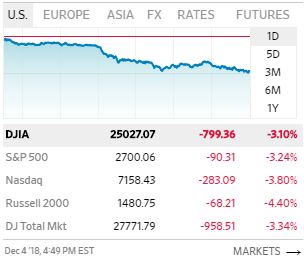
Bleeding off liquidity – how much and how fast?
The debate on the withdrawal of liquidity from the American banking system is conducted in full public scrutiny all the time. This ensures an open debate with several opposing opinions expressed on a daily basis by experts on and investors in the American capital market. It is there for any interested person to follow and to comment on.
The debate on the withdrawal of liquidity from the Chinese banking system is conducted behind closed doors with only snippets reaching the outside world.
The most valuable contributions come mostly from American and European analysts who represent companies that are invested in China.
A large part of this debate is based on conjecture and anticipation. It can at most be described as intelligent or informed guessing.
The debate on any possible withdrawal of liquidity from the Namibian banking system never happens, not by experts and not by the public.
The local capital market has become so focussed on government debt instruments, I can only imagine how traders must shudder at the mere mention of reducing liquidity in the local capital market.
Last week Friday, a local commercial bank issued two treasury bonds as senior unsecured notes to the combined value of N$200 million under the bank’s Medium Term Note Programme. Issued by Bank Windhoek and listed on the Namibian Stock Exchange, these two bonds tell a remarkable story of the local capital market, particularly the expected direction of interest rates over the next five years.
The first bond, BWJd17, was listed at an issue rate of 6.7150% which is based on the 3-month Johannesburg Interbank Rate plus 94 basis points. This bond consists of so-called Floating Rate Notes.
The total amount issued was N$100 million and it was 2.41 times oversubscribed, indeed an indication that investors in Bank Windhoek debt instruments regard this as a good investment.
The bond is issued for three years running with the maturity date set at 25 April 2017.
The second bond, BWFd19, was listed at an issue rate of 9.4250%, but benchmarked to the South African government bond, R204 plus 164 basis points.
This bond consists of so-called Fixed Rate Notes. The total amount issued was also N$100 million and this bond was 2.08 times oversubscribed. Maturity date is set for 25 April 2019.
From the issue rates one immediately sees that Bank Windhoek pays marginally more for some of its capital than other, bigger commercial banks, and substantially more than the Government of Namibia. But the most important signal I gathered from the listing announcement, is that the market, i.e. private investors, is expecting interest rates to go up only marginally over the next five years.
Current yields on benchmark South African bonds run anything between 6.8% and 8.48% depending mostly on maturities. Yields on longer dated bonds are always priced higher to compensate investor for risk carried over a longer period.
The comparative Namibian bonds offer yields between 6.3% and 9.3% with maturities from one year to ten years. Here again, the longer dated bonds are assumed to carry higher risk, so naturally the bond is cheaper and the yield is higher. It also shows that Namibia has to pay a premium for the privilege of feeding the over-eager capital market investors.
Of course, merely looking at the statistics, one has no idea of who the investors are, but bond investors are usually a savvy bunch since they deal in a market where profits or losses are calculated to yields shifts that in turn, are based on hundredths of percents.
It is difficult to infer reasonable assumptions based on the sentiments of bond investors. The investor, just like the analyst, may be wrong.
But if the yield curve of the longer bonds steepens, it displays a general expectation of higher interest rates. In other words, bond investors are expecting liquidity to be bled off the market over the next five years.
Whether that holds true for Namibia is also difficult to forecast with too much alacrity. The local dynamics are different and the targeted real GDP growth rate is 5%. For that a lot of capital will be required. How expensive that capital eventually will turn out to be, is an open question.










































